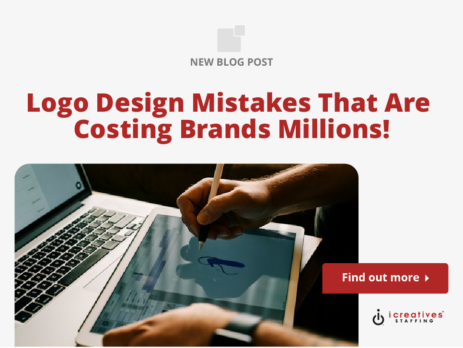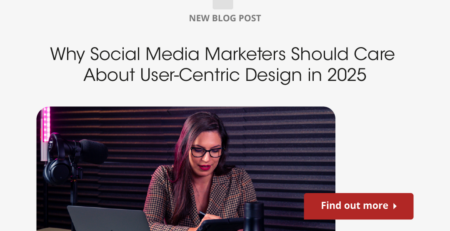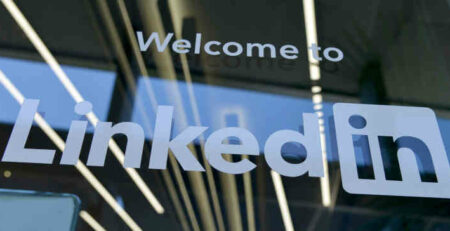Logo Design Mistakes That Are Costing Brands Millions
Logo design is a critical aspect of a brand’s identity, often serving as the first point of interaction between the company and potential customers. However, when not executed correctly, logo design can lead to misunderstandings, loss of brand value, and even financial losses running into millions. This article delves into the pitfalls of logo design, highlighting common mistakes that have proven costly for brands around the world.
One of the primary errors in logo design is the lack of originality. Many brands fall into the trap of imitating their competitors, resulting in a logo that lacks distinctiveness and fails to stand out in a crowded market. This not only diminishes the brand’s identity but can also lead to legal issues if the design is too similar to another trademarked logo.
Another significant mistake is overcomplicating the design. A logo should be simple enough to be memorable but powerful enough to convey the brand’s message. Overly complex logos can confuse potential customers and dilute the brand’s message, making it harder for the logo to serve its purpose as a quick identifier for the company.
Ignoring the target audience is a critical error that can alienate potential customers. A logo must resonate with the demographic the brand is targeting; otherwise, it risks missing its mark entirely. Understanding the audience’s preferences, values, and behaviors is essential in crafting a logo that connects and endures.
Lastly, inconsistency in branding, where the logo does not align with the overall brand strategy, can lead to confusion and mistrust among consumers. A cohesive brand strategy ensures that the logo complements other branding elements, creating a unified and strong brand identity.
Most Asked Questions About Logo Design Mistakes
- Why is originality crucial in logo design?
- How can complexity harm a logo’s effectiveness?
- What are the risks of ignoring the target audience in logo design?
- How does inconsistent branding affect a logo’s impact?
- What are the long-term effects of poor logo design?
Why is Originality Crucial in Logo Design?
Originality in logo design is not just about standing out in the market; it’s about establishing a unique brand identity that captures the essence of the company. A truly original logo serves as a strong foundation for the brand’s visual identity and helps in building brand loyalty. Here are key reasons why originality is paramount:
- Brand Recognition: An original logo is easily recognizable and helps consumers instantly associate the visual mark with your brand.
- Legal Protection: Original logos are less likely to infringe on existing trademarks, reducing legal risks and potential conflicts.
- Market Positioning: A unique logo can position a brand as an innovator in its field, enhancing its market appeal.
- Customer Loyalty: Original designs can foster a deeper emotional connection with customers, encouraging loyalty.
For more insights on enhancing your brand’s market position, consider reading about outsourcing social media.
Creating an original logo involves thorough research, creativity, and strategic thinking. Designers must explore various design elements, including colors, shapes, and typography, to create a distinctive and meaningful logo. Additionally, understanding the brand’s core values and mission is crucial in reflecting its identity accurately through the logo.
Case studies of successful brands show that those with original logos often enjoy a competitive edge. For instance, Apple’s simple but distinctive bitten apple logo or Nike’s swoosh symbol exemplify how original designs can become iconic. These logos not only reflect the companies’ identities but also their commitment to innovation and quality.
However, the process of creating an original logo is fraught with challenges. Designers must avoid generic and overused trends while still keeping the design relevant to the industry. They also need to ensure that the logo is scalable and versatile, looking equally effective on different mediums and scales.
Feedback from various stakeholders during the design process can provide valuable insights that enhance the logo’s originality. Engaging with a diverse group of people, from potential customers to design experts, can uncover unique perspectives that refine the logo design.
Ultimately, the goal of an original logo is to tell the brand’s story in a visually compelling way that resonates with the audience. It should serve as a clear identifier for the company, distinguishing it from competitors and building a strong brand presence in the market.
For further reading on building a strong brand presence, see How to Market Yourself as a Freelancer.
How Can Complexity Harm a Logo’s Effectiveness?
Complexity in logo design can be a double-edged sword. While intricate designs can be visually appealing, they often fail to communicate the intended message clearly and quickly to the audience. The effectiveness of a logo lies in its ability to be instantly recognizable and memorable, qualities that are usually compromised in overly complex logos. Here are several ways in which complexity can detract from a logo’s effectiveness:
- Reduced Memorability: Complex logos are harder for people to recall, which is detrimental to brand recognition.
- Scalability Issues: Intricate designs may not scale down well to smaller sizes, such as on business cards or promotional items, losing clarity and impact.
- Printing Difficulties: Highly detailed logos can lead to printing issues, which can increase production costs and affect the quality of branded materials.
- Brand Message Dilution: With too many elements vying for attention, the core message of the brand can become muddled, making the logo less effective as a communication tool.
To avoid these pitfalls, designers should strive for simplicity in their logo designs. This does not mean the design has to be plain or boring, but rather that each element of the design should be intentional and contribute to a cohesive whole. The use of clean lines, limited color palettes, and clear typography can help achieve this balance.
Consider the logo of Apple Inc., which is celebrated for its simplicity and effectiveness. The clean, uncluttered apple shape with a bite taken out is not only easy to recognize and remember but also scales beautifully across different mediums. This simplicity makes it one of the most iconic logos in the technology industry.
Designers should also consider the various applications of the logo during the design process. A good logo must be versatile, looking as good on a digital screen as it does embossed on leather. Testing the logo in different contexts can help identify potential issues with complexity before they become costly.
Feedback from target audiences can also provide crucial insights into how a logo is perceived. If a logo is consistently described as “confusing” or “hard to understand,” it may be a sign that the design is too complex. Simplifying the logo could make it more effective and enhance brand recognition.
For more on effective branding strategies, read about recognizing employees which can also enhance brand image internally and externally.
What are the Risks of Ignoring the Target Audience in Logo Design?
Ignoring the target audience during the logo design process is a critical mistake that can have far-reaching consequences for a brand. A logo must resonate with the people it is intended to attract; otherwise, it risks being ineffective or, worse, off-putting. Here are several risks associated with not considering the target audience in logo design:
- Lack of Connection: A logo that does not appeal to its intended audience is unlikely to make a lasting impression or foster brand loyalty.
- Misinterpretation: Without audience input, the logo might convey unintended messages or values, potentially alienating customers.
- Reduced Market Competitiveness: A logo that fails to appeal to its target market can put the brand at a disadvantage compared to competitors who have more audience-aligned branding.
- Wasted Resources: Significant time and money can be wasted on a logo redesign if the initial design fails to connect with the intended audience.
Understanding the target audience involves research into their demographics, cultural references, values, and preferences. This information should guide the design process, ensuring that the logo not only looks good but also communicates effectively with its intended audience.
For instance, if a brand targets young, tech-savvy consumers, the logo should be modern, dynamic, and easily adaptable to digital platforms. Conversely, a luxury brand aimed at an older, affluent audience might opt for a logo that exudes sophistication and timelessness.
Engaging with the audience during the design process can also provide valuable feedback that can be used to refine the logo. Surveys, focus groups, and social media can be effective tools for gauging audience reaction to logo designs and should be part of the design strategy.
Ignoring the target audience can lead to a logo that misses the mark, resulting in a weak brand identity and lost business opportunities. By prioritizing the audience’s preferences and expectations, companies can create a logo that not only represents the brand but also appeals to the people it serves.
To further understand the importance of aligning with audience expectations, consider reading about psychological safety in the workplace, which also emphasizes the value of understanding and addressing the needs of a specific group.
How Does Inconsistent Branding Affect a Logo’s Impact?
Inconsistent branding can severely undermine the effectiveness of a logo, no matter how well-designed it might be. A logo is a part of a larger brand strategy, and when it does not align with other branding elements, it can create confusion and dilute the brand’s message. Here are several ways inconsistent branding can impact a logo:
- Confusion Among Consumers: If the logo conveys a different message from other brand materials, it can confuse customers about what the brand stands for.
- Reduced Brand Loyalty: Inconsistency can make a brand appear unreliable or untrustworthy, which can discourage loyalty among consumers.
- Loss of Brand Identity: Without a consistent brand message, it can be difficult for a logo to establish a strong brand identity, making it harder for the brand to stand out in the market.
- Impact on Marketing Efforts: Inconsistent branding can complicate marketing efforts, as mixed messages can make it difficult to create coherent marketing campaigns.
To ensure consistency, all elements of the brand, from the logo to marketing materials and online presence, should be aligned. This includes using consistent colors, fonts, and imagery that reflect the brand’s core values and message.
A brand style guide can be an invaluable tool in maintaining consistency. This document outlines how branding elements should be used across various media and can help ensure that everyone involved in the brand’s presentation is on the same page.
Regular reviews of branding elements can also help identify areas where inconsistencies are creeping in, allowing for timely adjustments that keep the brand coherent and focused.
For example, consider a global brand like Coca-Cola, which maintains a high level of consistency in its branding. The Coca-Cola logo is instantly recognizable and is consistently used across all marketing materials, packaging, and advertising. This consistency reinforces the brand’s identity and contributes to its strong market presence.
For more on managing brand consistency, especially in team settings, read about building trust between managers and employees.
What are the Long-Term Effects of Poor Logo Design?
Poor logo design can have lasting negative effects on a brand, impacting everything from brand perception to financial performance. Here are some of the long-term consequences of ineffective logo design:
- Brand Misrepresentation: A poorly designed logo may fail to accurately represent the brand’s values and personality, leading to a disconnect with the target audience.
- Reduced Competitive Edge: An unappealing or irrelevant logo can make a brand less competitive in its market, as it fails to attract attention or resonate with consumers.
- Increased Marketing Costs: A weak logo may require more aggressive and costly marketing efforts to build brand recognition and loyalty.
- Need for Rebranding: In some cases, a poor logo design can necessitate a complete rebranding effort, which can be expensive and risky.
The impact of a poor logo design extends beyond mere aesthetics. It can affect customer perceptions, brand loyalty, and ultimately, the bottom line. Therefore, investing in high-quality logo design from the outset is crucial for long-term success.
Effective logo design should be an integral part of the brand’s strategy, not an afterthought. It requires careful consideration of the brand’s goals, audience, and the message it wants to convey. A well-designed logo can pay dividends for years, helping to build a strong, recognizable brand.
For further insights into strategic planning for brand success, consider exploring the benefits of using a staffing agency to find the right talent for your branding needs.
Moreover, monitoring the performance and perception of the logo over time can provide valuable insights into its effectiveness and help guide future branding decisions. Regular feedback from customers and stakeholders can inform adjustments that keep the logo relevant and powerful.
In conclusion, the importance of a well-thought-out logo design cannot be overstated. It is not just a small component of the brand but a fundamental element that can dictate the brand’s trajectory. Investing in a high-quality logo design is investing in the future of the brand.
Conclusion
In the world of branding, the logo stands as a pivotal element, often determining the first impression a brand makes on potential customers. As we have explored, common mistakes in logo design, such as lack of originality, excessive complexity, ignoring the target audience, and inconsistent branding, can have severe repercussions, costing brands not just financially but also in terms of market position and customer trust.
The key to effective logo design lies in simplicity, relevance, and consistency. These elements ensure that a logo not only captures the essence of the brand but also communicates it effectively to the target audience. By avoiding common pitfalls and focusing on these fundamental principles, brands can create logos that powerfully represent their identity and values.
Moreover, the process of designing a logo should be iterative and inclusive, involving feedback from various stakeholders, including potential customers. This approach helps ensure that the logo resonates with its intended audience and supports the brand’s overall strategy.
Ultimately, a well-designed logo is an investment in the brand’s future. It lays the foundation for strong brand recognition, fosters customer loyalty, and supports effective marketing strategies. By recognizing the critical role of logo design in branding, companies can leverage their logos to achieve significant competitive advantages and long-term success.
For further reading on enhancing your business strategies, consider exploring resources on conducting performance reviews and assessing competitive salaries, which can also contribute to a robust business environment.
In today’s competitive market, finding the right creative and marketing expert can be a challenge. But with icreatives, you’re in experienced hands. With 37 years in staffing and a track record of matching more than 10,000 employees to over 1,000 companies worldwide, we know how to connect you with the best. Plus, you only pay if you hire—there’s no risk, only results. Ready to find your perfect creative or marketing expert? HIRE WITH ICREATIVES today!












